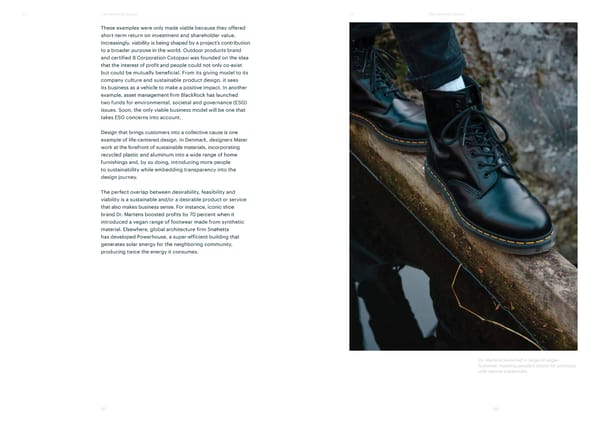T7 Life-centered design T7 Life-centered design These examples were only made viable because they offered short-term return on investment and shareholder value. Increasingly, viability is being shaped by a project’s contribution to a broader purpose in the world. Outdoor products brand and certified B Corporation Cotopaxi was founded on the idea that the interest of profit and people could not only co-exist but could be mutually beneficial. From its giving model to its company culture and sustainable product design, it sees its business as a vehicle to make a positive impact. In another example, asset management firm BlackRock has launched two funds for environmental, societal and governance (ESG) issues. Soon, the only viable business model will be one that takes ESG concerns into account. Design that brings customers into a collective cause is one example of life-centered design. In Denmark, designers Mater work at the forefront of sustainable materials, incorporating recycled plastic and aluminum into a wide range of home furnishings and, by so doing, introducing more people to sustainability while embedding transparency into the design journey. The perfect overlap between desirability, feasibility and viability is a sustainable and/or a desirable product or service that also makes business sense. For instance, iconic shoe brand Dr. Martens boosted profits by 70 percent when it introduced a vegan range of footwear made from synthetic material. Elsewhere, global architecture firm Snøhetta has developed Powerhouse, a super-efficient building that generates solar energy for the neighboring community, producing twice the energy it consumes. Dr. Martens launched a range of vegan footwear, meeting people’s desire for products with ethical credentials. 95 96
 xReport Page 54 Page 56
xReport Page 54 Page 56